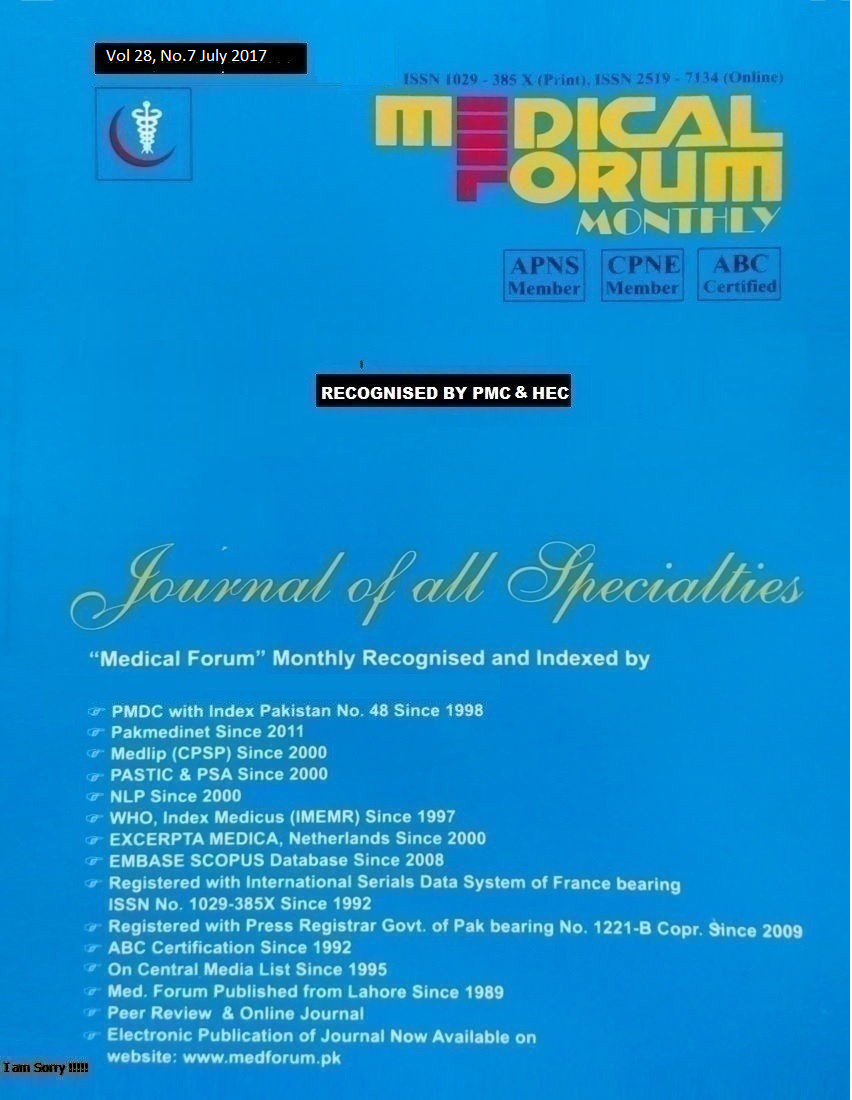
19. Variations in the Anatomy of Diaphrahgmatic Crura
Zahid Shah1, Munila Shabnam Khattak1, Sadaf Ambreen, Shahbuddin2 and Abdul Sahib Khan3
ABSTRACT
Objective: The aim of this study was to note down the variations in the attachment of diaphragmatic crura in respect to their role in gastro esophageal reflux disease, cruraltumours and thickening of crura in chest trauma. Study Design: Descriptive study.
Place and Duration of Study: This study was conducted at the Anatomy department of Khyber Medical College Peshawar and Khyber Girls Medical College Peshawar from 2008 to 2016.
Material and Methods: 32 human cadavers were dissected irrespective of age and sex. After the removal of abdominal viscera attachment of right and left diaphragmatic crura noted. Data was analyzed by SPSS version 10. Result: On the right side crura was attached to the bodies of L1 toL3 vertebra in 78.13% and on the left side from L1 to L2 in 75%.However in 18.75 % the lower most attachment extended to L4 vertebra on the right side and L3 in 25
% on the left side .Crurain 21.87% of cases were on the right side and 18.75%of cases on the left side merge with anterior longitudinal ligament.
Conclusion: There is a marked anatomical variations in the attachment of dia hragmatic crura. Recognition of the variant will be helpful in diagnosis and treatment of hiatal hernia, cruraltum ur and crural injury.
Key Words: Diaphragmatic crura, Gastroesophagealreflux, hiatal hernia, cruraltumour, crural injury
Citation of articles: Shah Z, Khattak MS, Ambreen S, Shahbuddin, Khan AS. Variations in the Anatomy of Diaphrahgmatic Crura. Med Forum 2017;28(7):78-81.
